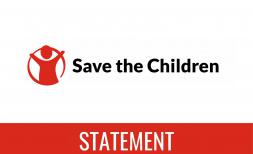Extreme floods throw the lives of 19 million children off course in past three months – Save the Children

Destruction in Swat, KP Province, following flooding in Pakistan
LONDON/GENEVA, 3 November 2022 – Widespread flooding over the past three months has thrown the lives of about 19 million children off course in the top five most impacted countries, Save the Children said, highlighting the need for next week’s COP27 summit to get the climate emergency under control.
Children in Pakistan, Nigeria, India, Chad and South Sudan witnessed the most extensive flooding globally between August and October this year. Flooding in these five countries affected a total of 38.7 million people, according to The International Disasters Database, with thousands of people killed and millions displaced.
Water flowing above dangerous levels left a trail of destruction in each country, with homes submerged, crops destroyed, and schools forced to close – jeopardising the education of thousands of children.
Torrential monsoon rains, accelerated by glacial melt, triggered record-breaking flash flooding in Pakistan this summer, which severely impacted about 16 million children – the highest number of children affected by flooding in a single country this year.
The floods disproportionately hit the most vulnerable households in the poorest areas of Pakistan, washing away livestock and millions of acres of farmland and submerging entire villages. As a direct result of the flooding, between 8.4 to 9.1 million people may be pushed into poverty, according to official government estimates.
The number of people going hungry in Pakistan has also soared by an alarming 45%, with 8.62 million people now facing crisis or emergency levels of food insecurity – 3.4 million of them children.
The five countries most affected by flooding with available Acute Food Insecurity Data all suffer from high levels of food insecurity, meaning they are all in the grips of a hunger crisis that is being accelerated by climate disasters.
In Nigeria, where about 19 million people were already experiencing crisis-levels of hunger or worse, extreme flooding has destroyed hundreds of thousands of acres of farmland.
More than 1.25 million children have been affected by the worst floods to hit Nigeria in a decade. With at least 250 schools destroyed and millions of people forced to flee their homes, flooding has taken a serious toll on children’s learning.
Falimata*, 16, lives in Likdir – one of the hardest-hit communities by the catastrophic flooding in Yobe State, northeast Nigeria.
Falimata explained:“We haven’t experienced a large volume of flooding in our community [before]. This year's floods have destroyed homes, wiped away my parent’s farm, and blocked the road that leads to our school.
“We don’t have clean water. We have a shortage of food and have difficulty accessing medical services. I now stay at home without going to school and I don’t know how long this will last. My dream is to be educated and support my community at large.”
The climate crisis is changing the world as we know it, with grave implications for children. One-third of the world’s child population is living with the dual impacts of poverty and high climate risk, according to a recent Save the Children report. The research also found that 80% of children are estimated to be affected by at least one extreme climate event a year.
Yolande Wright, Save the Children’s Global Director Child Poverty, Climate and Urban, said:
“It is extremely alarming how many countries have suffered from record-breaking flooding this year, let alone in the past three months. When looking at the total scale of how the climate crisis is affecting children around the world, it is almost unimaginable.
“About 38.7 million people around the world have had their lives turned upside down by extreme flooding in the five worst affected countries, including about 19 million children. Many of these children are still reeling from the effects of the floods and require urgent assistance.
“COP27 represents one of the final opportunities to get the climate emergency under control and provide ambitious funding to secure a safe future for our planet and generations to come. The climate crisis is a child right crisis and the decisions made in Sharm el-Sheikh will affect children’s futures.”
It will take months, if not years, to repair the flood damage in all five countries. However, the scale of need required for sustainable and resilient reconstruction likely exceeds most of the countries available resources. Save the Children is calling on governments at COP27 to support the creation of a new loss and damage climate finance mechanism to help address the cost of the impacts of the climate crisis to children’s rights. This includes supporting communities already hit by climate impacts.
Save the Children teams have been responding to the floods in all of the five most impacted countries in the past three months where the aid organisation works (Pakistan, Nigeria, South Sudan and India).
ENDS
Notes to Editor:
- According to The International Disasters Database, flooding ending between August and October 2022, affected about 38.7 million people in the top five most impacted countries, including about 19 million children, using World Population Prospects 2022 data to calculate the total number of children per country:
- Pakistan: about 33 million total population affected – 16 million children
- Nigeria: about 2.5 million total population affected – about 1.25 million children affected
- India: 1.3 million total population affected – about 400,000 children affected
- Chad: 1 million total population affected – about 544,000 children affected
- South Sudan: 900,000 total population affected – about children 463,000 affected
- The five most affected countries by flooding with available Acute Food Insecurity Data all suffer from high levels of food insecurity – with at least 10% of the population experiencing crisis levels of hunger or worse: Pakistan (26%), Nigeria (12%), Chad (14%), South Sudan (54%) – IPC data is not available for India.
- In Pakistan, Save the Children is providing emergency relief to families including food, emergency shelter and medical assistance. The agency is running two medical camps in the flood-affected district Swat, Khyber Pakhtunkhawa, where it is providing life-saving medical care to children suffering from flood-related illnesses. As of 31 October, it has reached almost 99,000 people, including almost 53,000 children.
- In Nigeria, Save the Children is providing children and families affected by flooding with life-saving food, safe drinking water, cash assistance, matrasses, blankets, mosquito nets, child protection services and emergency shelter kits. The team is supporting 36,000 children and 18,000 families in the most affected areas in six states (Jigawa, Benue, Borno, Yobe, Kogi, and Oyo).
- In South Sudan, Save the Children is providing children and families affected by flooding with food, cash assistance, hygiene and shelter kits, education, and water and sanitation.
- In India, Save the Children’s emergency response to the flooding included food, shelter, hygiene kits, education kits, setting up child-friendly spaces, training Child Care Institutes, and cash assistance.
- Save the Children does not have an office in Chad and is not responding to the floods there.
*******************************************************************************************************************
For further enquiries please contact:
- Samantha Halyk Samantha.halyk@savethechildren.org
We have Yolande Wright available as a spokesperson.
Our media out of hours (BST) contact is media@savethechildren.org.uk / +44(0)7831 650409
Please also check our Twitter account @Save_GlobalNews for news alerts, quotes, statements and location Vlogs.




